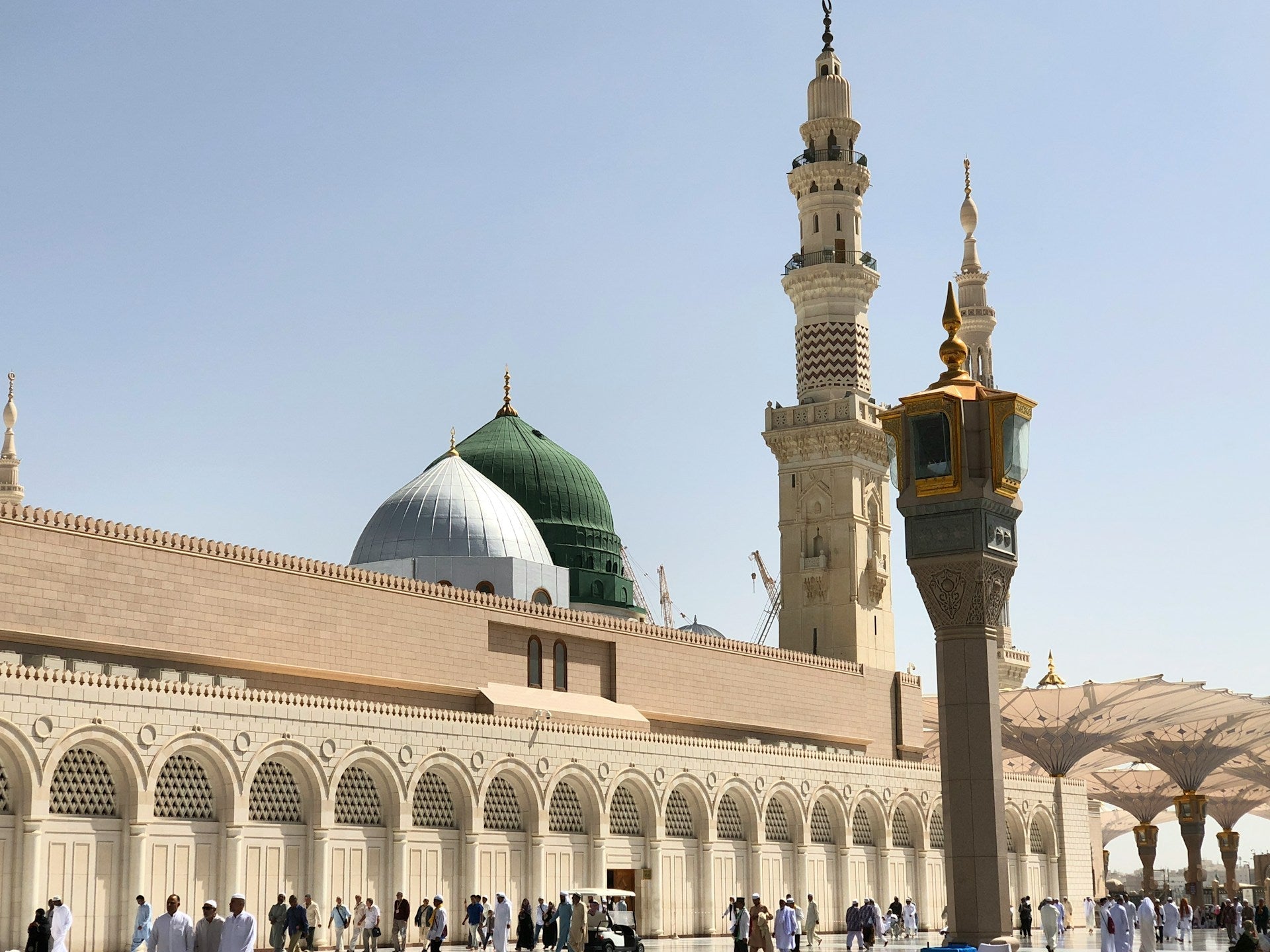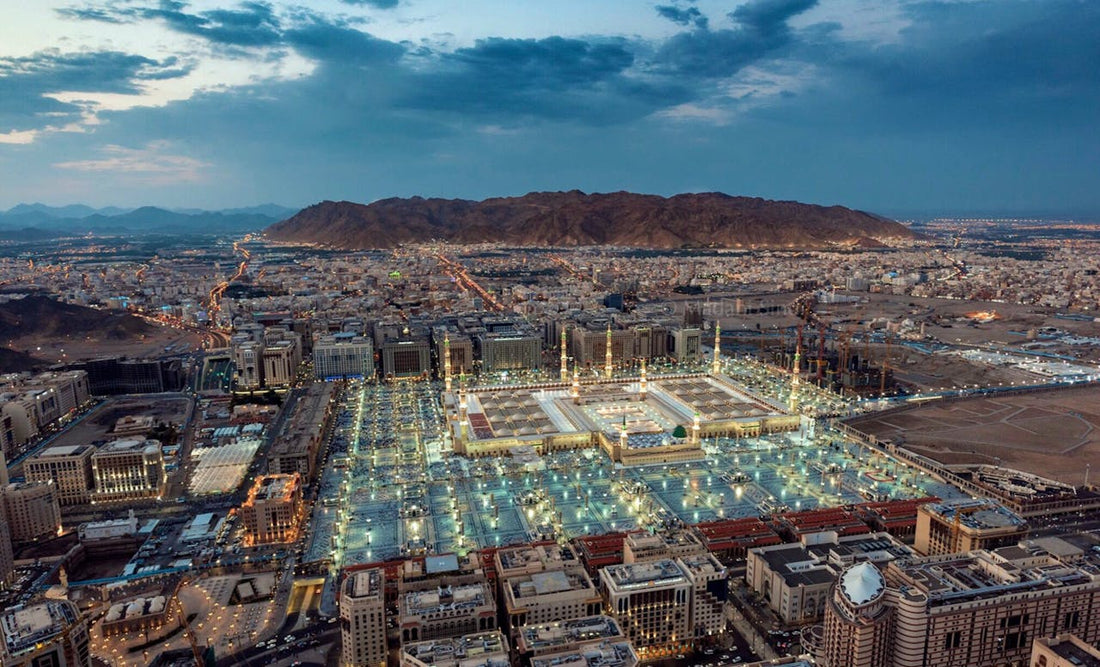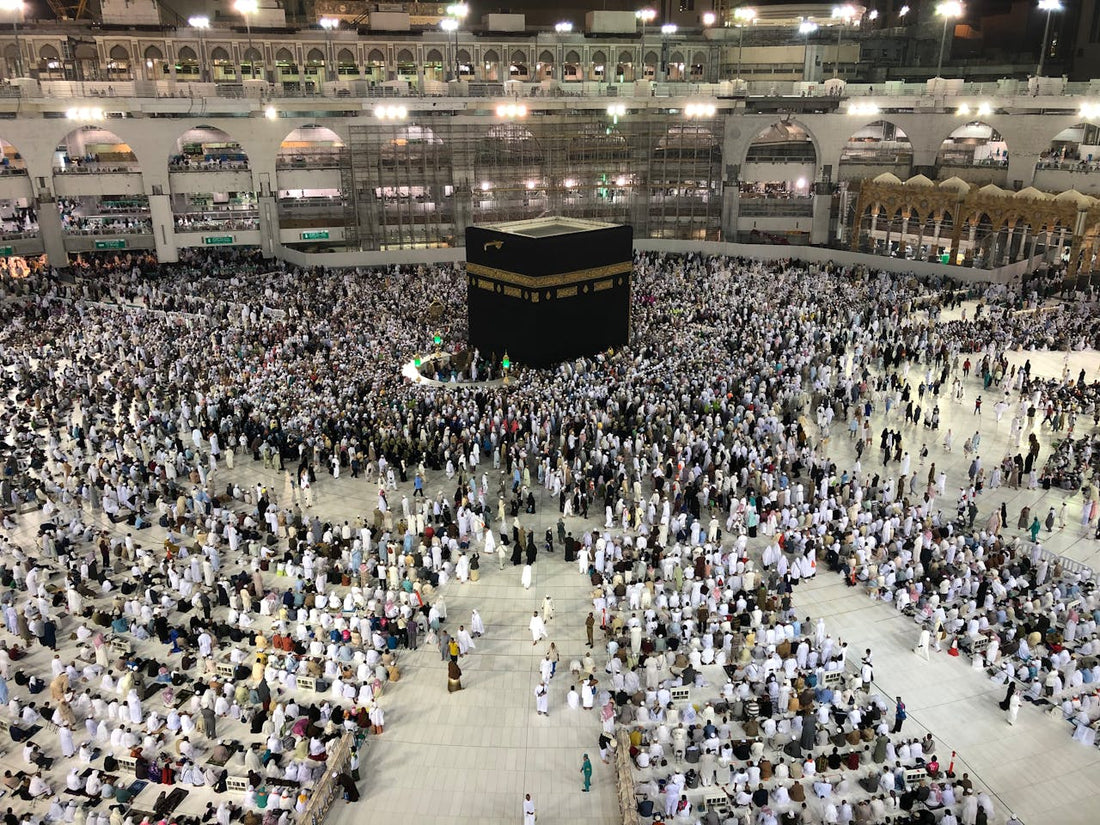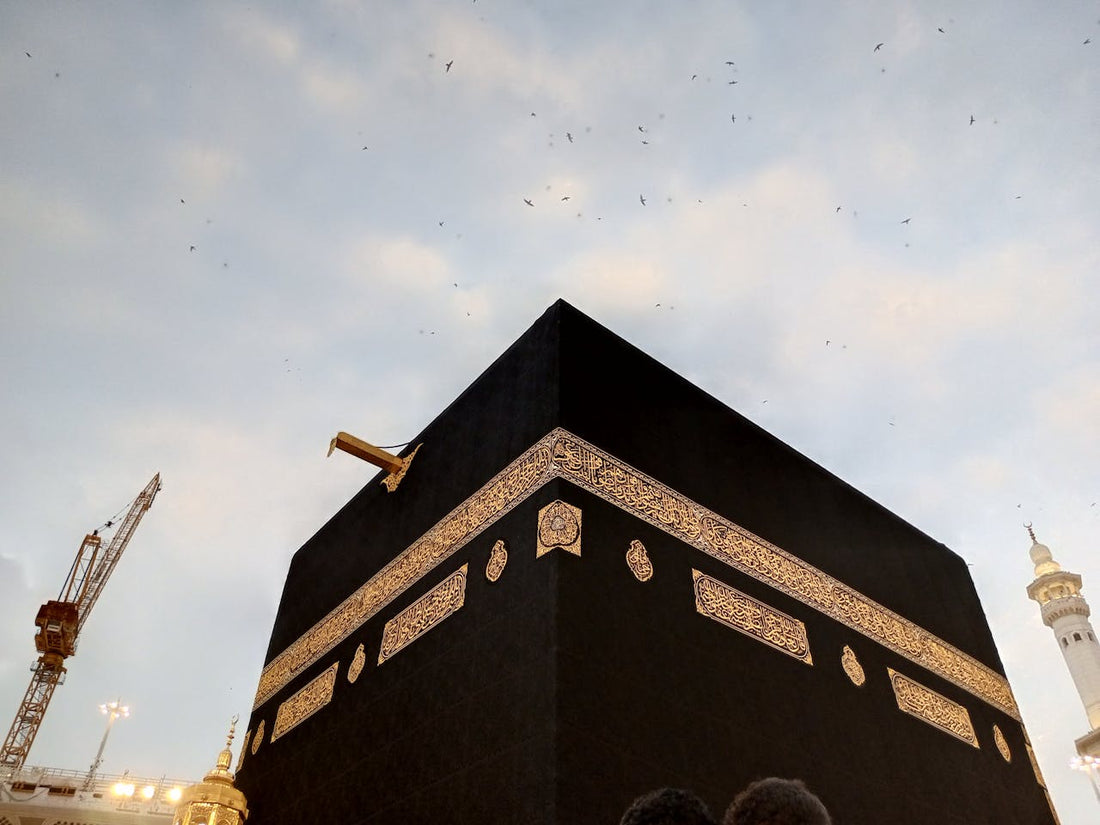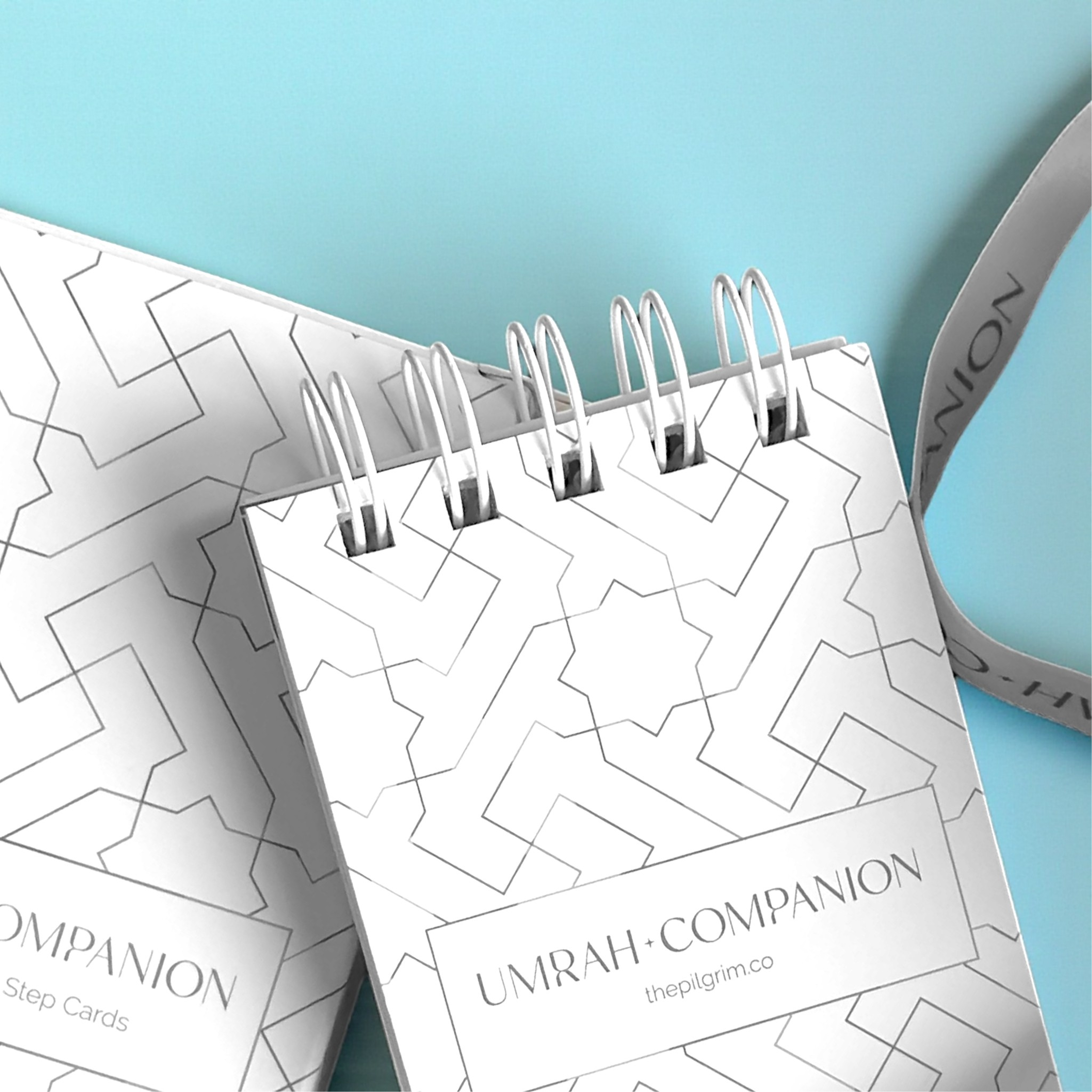Visiting ziyarat places in Madinah is a spiritually uplifting experience rooted in reverence, knowledge, and a deep desire to connect with the sacred past.
Unlike a typical travel itinerary, this journey guides you through holy, historical places that shaped the beginnings of Islam.
From the luminous Masjid al Nabawi to the monumental mountain of Uhud, each location forms part of the biography of Prophet Muhammad (ﷺ) and his noble companions.
These places aren't just remnants of the past, they are sacred places that invite every Muslim to walk in the Prophet’s (ﷺ) footsteps and reflect upon the trials and triumphs of early Islam.
Pilgirim Hubs offers a complete Madina ziyarat PDF guide, and explanations for all the important places to visit in Madinah.

Whether you’re visiting after Umrah, during Hajj, or independently, your spiritual Madinah Ziyarat roadmap begins here.
What is Ziyarat in Madinah?
Ziyarat (visit) in an Islamic context refers to visiting sacred places, especially those associated with Prophet Muhammad (ﷺ), the Sahabah (companions), or important Islamic events.
While not obligatory like Hajj or Umrah, it is highly recommended as a Sunnah, offering immense spiritual reward.
According to the hadith:
"Whoever visits me after my death, it is as if he visited me during my life." (Musnad Ahmad, authenticated by Ibn Hajar)
Major Ziyarat Places in Madinah:
- Masjid al Nabawi / Masjid al-Nabawi / Al-Masjid An-Nabawi
- Jannat al-Baqi
- Masjid Quba / Quba Mosque / Masjid Quba
- Masjid al-Qiblatain
- Masjid Ghamama
- Masjid Al-Ijabah
- The Seven Mosques (Sab’u Masajid)
- Mount Uhud and Martyrs
- Well of Uthman
- Masjid Abu Bakr
- Masjid Umar
- Masjid Ali
-
Masjid At-Tan’eem (In Makkah)
These ziyarat places in Madinah revive the stories of battle, sacrifice, and resilience from the time of Prophet Muhammad (ﷺ) and hold immense relevance for Muslims worldwide.
How many Ziyarat are there in Madinah?
There are over 30 ziyarat places in Madinah including famous sites and lesser-known gems.
While most pilgrims visit the core 10 places to visit in Madinah, scholars and local guides recommend seeking out additional holy places known for their ties to early Islamic struggles, battles, and governance.
Exploring these sites fosters a deepened identity with the Ummah and reflects the spirit of the Hazrat companions who lived, prayed, and sacrificed here for the sake of Allah (SWT).
Al-Masjid An-Nabawi (Masjid al Nabawi / Masjid al-Nabawi)

The second holiest site in Islam after Masjid al-Haram, Masjid al Nabawi is the heart of ziyarat places in Madinah.
Built by Prophet Muhammad (ﷺ) himself, it includes the Rawdah Mubarak (Garden of Paradise), and the Prophet's (ﷺ) grave.
Dua when entering the Prophet’s Mosque:
“O Allah, open the gates of Your mercy for me.” (Sahih Muslim 713)
Jannat al-Baqi

Jannat al-Baqi, also known as the Garden of Heaven, is one of the most revered ziyarat places in Madinah.
Located adjacent to Masjid Nabawai, it holds the resting places of many companions, family members of Prophet Muhammad (ﷺ), and revered personalities from Islamic history. Among those buried here are:
- Uthman ibn Affan (RA) – the third caliph of Islam
- Fatimah bint Asad (RA) – mother of Ali
- Wives of the Prophet (ﷺ) including Aisha (RA), Hafsa (RA), and Umm Salama (RA)
- Imam Hasan ibn Ali (RA) – the beloved grandson of the Prophet (ﷺ)
Historically, the Prophet (ﷺ) used to visit this cemetery regularly and supplicate for those buried there.
The atmosphere in Jannat al-Baqi is one of quiet reflection, serving as a reminder of mortality and the temporary nature of life.
Dua at gravesites (from Sunnah):
“Peace be upon you, O inhabitants of the dwellings, believers and Muslims. We will join you, in sha Allah.” - (Sahih Muslim 975)
Masjid Quba (Quba Mosque / Masjid Quba

Masjid Quba is renowned as the first mosque ever built in Islam. It was laid down by the Prophet Muhammad (ﷺ) himself upon his arrival in Madina Munawara during the Hijrah.
Its significance is highlighted in both Hadith and the Quran.
The Quran refers to it as the mosque “founded on piety”:
“A mosque founded on righteousness from the first day is more worthy for you to stand in.” - (Surah At-Tawbah 9:108)
Pilgrims visiting Madinah often prioritise praying in Masjid Quba because of the immense reward attached to it.
Hadith:
“Whoever purifies himself in his house and comes to Masjid Quba and offers two rak’ahs therein will have the reward of an Umrah.” - (Ibn Majah 1412)
This ziyarat place is among the most frequented by Muslims seeking reward and spiritual cleansing.
Masjid al-Qiblatain

Masjid al-Qiblatain, literally “The Mosque of Two Qiblahs,” is the site of one of the most historic events in Islam: the change of the direction of prayer (Qiblah) from Jerusalem to the Kaaba in Makkah.
During a congregational prayer led by the Prophet Muhammad (ﷺ), a revelation came down instructing him to change the Qiblah direction mid-prayer.
The companions immediately obeyed, shifting their orientation toward Makkah, thus displaying their sincerity and readiness to follow divine guidance.
This incident reflects one of the unique, living moments of revelation and is commemorated in the Quran:
“So turn your face toward al-Masjid al-Haram...”
(Surah Al-Baqarah 2:144)
The masjid stands as a reminder of the early tests of faith and the obedience of the early Muslims.
Masjid Ghamama

Masjid Ghamama is located just a few steps from Masjid al Nabawi, yet carries a legacy uniquely its own. It is believed to be the site where Prophet Muhammad (ﷺ) offered Eid Salah and performed Salat al-Istisqa (prayer for rain).
The name “Ghamama,” which means cloud, is linked to the event in which a cloud shaded the Prophet (ﷺ) during prayer,a divine sign of mercy and acceptance.
Dua for rain (as narrated by the Prophet ﷺ):
“O Allah, send us rain! O Allah, send us rain! O Allah, send us rain!”
(Sahih al-Bukhari 1013)
Although lesser-known compared to other mosques, Masjid Ghamama remains a powerful ziyarat place due to its association with communal prayer and divine mercy.
Masjid Al-Ijabah

Masjid Al-Ijabah holds a unique place among the ziyarat places in Madinah because it is where the Prophet Muhammad (ﷺ) made three powerful duas, two of which were accepted by Allah (SWT).
The narration tells us:
“I asked my Lord three things; He granted me two and denied me one. I asked Him that my Ummah not be destroyed by famine, He granted it. I asked that they not be overcome by enemies from outside, He granted it. I asked that they not fight among themselves,
but He denied it.” - (Sahih Muslim 2493)
This masjid is a poignant reminder of the Prophet’s (ﷺ) concern for his Ummah. It’s a place to remember, reflect, and sincerely ask Allah (سُبْحَٰنَهُۥ وَتَعَٰلَىٰ), for the protection of the Muslim world.
The Seven Mosques (Sab’u Masajid)
The Seven Mosques are a cluster of small masjids built near the battlefield of Khandaq (The Trench). These include:
- Masjid Al-Fath
- Masjid Umar
- Masjid Ali
- Masjid Abu Bakr
- Masjid Salman al-Farsi
- Masjid Sa’d
(Some versions include Masjid al-Qiblatain as the seventh)
Each mosque marks a strategic spot where a particular companion or group took position during the Battle of the Trench.
The defense strategy was divinely inspired and executed with brilliance, saving Madinah from the attacking Quraysh.
Dua before battle (Qur’anic): “Sufficient for us is Allah, and [He is] the best Disposer of affairs.” - (Qur’an 3:173)
These mosques symbolize the unity and Islamic strength of the early Muslim army and are critical historical places that deserve reflection.
Mount Uhud & Martyrs

Mount Uhud is not just a mountain,it is a witness. It stood firm during the Battle of Uhud, when the Muslims faced a devastating setback due to disobedience to the Prophet’s (ﷺ) command. Despite the hardship, this battle remains a lesson in trust, resilience, and strategic patience.
At the foot of the mountain lie the graves of 70 martyrs, including the noble Hamza ibn Abdul Muttalib (RA), the beloved uncle of the Prophet (ﷺ), who is titled Sayyid al-Shuhada (Leader of the Martyrs).
The Prophet Muhammad (ﷺ) once said:
“Uhud is a mountain which loves us, and we love it.” - (Sahih al-Bukhari 2889)
Dua when visiting martyrs' graves:
“O Allah, forgive them and raise their ranks among the guided.” - (Sunan Abi Dawood 3221)
A visit to Uhud is often an emotional climax in any ziyarat tour,it connects you with sacrifice in its purest form.
Download Our Ziyarah List as a PDF
For a seamless journey, download the Madina Ziyarat Guide PDF, which includes historical context, duas, and a complete Madina ziyarat places list.

How to Perform Ziyarat in Madinah
To maximize reward and uphold etiquette, follow these steps for ziyarat:
- Make sincere niyyah for Allah (سُبْحَٰنَهُۥ وَتَعَٰلَىٰ).
- Stay in wudu.
- Start with Al-Masjid An-Nabawi.
- Offer salam to Prophet Muhammad (ﷺ).
- Visit each ziyarat place with humility.
- Avoid any innovations (bid’ah) or shirk.
- Recite authentic duas from Quran and Sunnah.
- Remain respectful in speech, attire, and action.
Frequently Asked Questions
When should I go and visit the Ziyarat places in Madinah?
Visit post-Umrah or Hajj when your heart is spiritually prepared. Ideal times: Rabi’ al-Awwal, Sha’ban, and early Ramadan. Early mornings help avoid heat.
How many ziyarat places are there in Madinah?
There are over 30 ziyarat places in Madinah, both popular and hidden sacred places filled with Islamic significance.
How long does it take to do a Madinah Ziyarat tour?
Typically 2 – 7 hours, but may extend if you explore thoroughly.
How much does a Madinah Ziyarat tour cost?
Our guided group madinah tours start from £200.
Why is Madinah so important for Muslims?
Madinah is where the first Islamic society was built, the Constitution of Madinah was formed, and major battles like Badr and Uhud occurred. It’s the city of the Prophet Muhammad (ﷺ).
Is performing a Ziyarat compulsory for Muslims?
No, but it is a highly recommended Sunnah that strengthens Imaan and connects Muslims with their spiritual and historical roots.
Summary – Ziyarat Places in Madinah
The ziyarat places in Madinah are not just locations; they are living proofs of the legacy of Prophet Muhammad (ﷺ) and the Muslims who followed him.
Whether you’re visiting Masjid al Nabawi, walking the mountain of Uhud, or praying at Masjid Quba, you are stepping into Islamic history.
This journey offers a renewal of faith, a moment for spiritual elevation, and a lifelong connection to the divine message.
Articles You May Also Like to Read
- Ziyarat Places in Makkah
- What is Hajj? Complete Guide
- Everything You Need to Know About Masjid Al Nabawi
- 10 Places to Visit in Madinah
